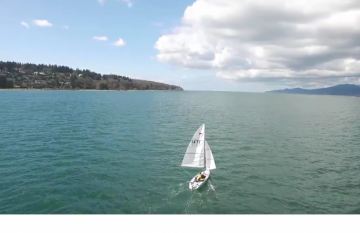
Capstone team works with the Disabled Sailing Association to control the Martin 16 with bio-signals for a hands-free sail
“Of ships sailing the Seas, each with its special flag or ship-signal;
Of unnamed heroes in the ships—Of waves spreading and spreading, far as the eye can reach;
Of dashing spray, and the winds piping and blowing;
And out of these a chant, for the sailors of all nations”
-Walt Whitman, Song for All Seas, All Ships
Client: Disabled Sailing Association of British Columbia
Avihu Nachmani, Project Facilitator and Designer
Faculty Supervisor: Shuo Tang
Capstone Team: Johnny Jamelarin, Benjamin Le, Xiaocong Ma and Kenneth Ng
Freedom, power, joy, adventure: these are experiences each and every one of us should have access to. Sailing, one of the most exciting and romantic sports, is also accessible and inclusive. Even people with no movement below the neck are able to sail by themselves in the Martin 16 sailboat. No other sport or recreational activity can match that level of independence.
This capstone project introduces a new method of controlling the Martin 16. Using a simple headband containing sensors that can track the movement of the eyes the pilot can control both the sails and rudder with a glance. Signals from the sensors are sent via Bluetooth to an Android app. From there the application communicates with the controller that drives the boat. The interface the students have developed is intuitive and reliable. The team is confident that this interface could be used in many other accessibility applications.
The Disabled Sailing Association would like to integrate this technology with the Martin 16. This locally built sailboat can be fitted with a selection of equipment to assist disabled sailors such as sip ‘n’ puff or joystick controllers. This capstone project will help to bring the joy of piloting this unique boat to even more sailors.
Find out more:
